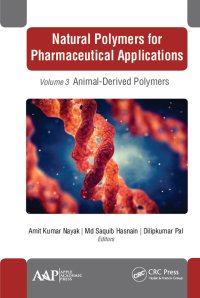
Ebook: Natural Polymers for Pharmaceutical Applications: Volume 3: Animal-Derived Polymers
- Tags: Bioscience, Pharmaceutical Science, Clinical Implementation, Pharmaceutical Technology, Computer Software-Pharmaceutical Science, Pharmacology, Engineering & Technology, Chemical Engineering, Biotechnology, Polymer Science, Textiles, Medicine Dentistry Nursing & Allied Health, Medicine, Pharmaceutical Medicine
- Year: 2019
- Publisher: Apple Academic Press
- City: New York
- Edition: 1
- pdf
In recent years, many animal-derived polymers have emerged as an attractive category of naturally derived polymers because of their advantageous physicochemical, chemical, and biological properties. The important biological properties of these natural polymers derived from animals are biocompatibility and biodegradation. These polymers are generally composed of repeated units of amino acids. Moreover, these polymers can be modified physically and/or chemically to improve their biomaterial properties.
Natural Polymers for Pharmaceutical Applications, Volume 3: Animal-Derived Polymers looks at how these polymers can be exploited as pharmaceutical excipients in various pharmaceutical dosage forms, like microparticles, nanoparticles, ophthalmic preparations, gels, implants, etc. The commonly used animal-derived polymers used as pharmaceutical excipients are hyaluronic acid (hyaluronan), albumin, collagen, gelatin, chondroitin, etc.